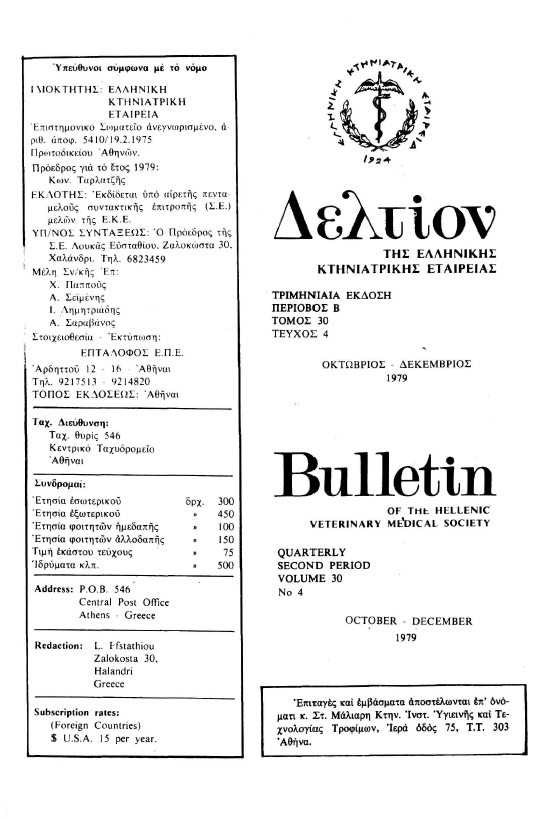Sweat water biological épuration by phytophagous and plancton eating fishes (Ctenopharyngodon ideila (vail and Hypophthalmichthys Molitrix Ivall):
Abstract
In this study the biological way to be exempt of phytoplancton and water weeds by means of phytopagous and plancton eating fishes Ctenopharyngodon ideila and Hypophtalmichtys Molitrix. This way of facing is more efficient from all the others because it is not causing problems in the environment and a better exploitation of the water is being done. The possibility of its application depends on two factors. a) From the water temperature and β) From the water system. The water temperature in the longest period of the year must be above 12°C for phytophagous fishes and above 6°C for plancton eating fishes. The water system must be close because the phytophagous fishes have the tendency of immipration. The abovementioned fishes not only free the water from non desirable vegetation but at the same time give us meat of excellent quality.
Article Details
- How to Cite
-
ΦΩΤΗΣ Γ. (2019). Sweat water biological épuration by phytophagous and plancton eating fishes (Ctenopharyngodon ideila (vail and Hypophthalmichthys Molitrix Ivall):. Journal of the Hellenic Veterinary Medical Society, 30(4), 277–281. https://doi.org/10.12681/jhvms.21422
- Issue
- Vol. 30 No. 4 (1979)
- Section
- Articles

This work is licensed under a Creative Commons Attribution-NonCommercial 4.0 International License.
Authors who publish with this journal agree to the following terms:
· Authors retain copyright and grant the journal right of first publication with the work simultaneously licensed under a Creative Commons Attribution Non-Commercial License that allows others to share the work with an acknowledgement of the work's authorship and initial publication in this journal.
· Authors are able to enter into separate, additional contractual arrangements for the non-exclusive distribution of the journal's published version of the work (e.g. post it to an institutional repository or publish it in a book), with an acknowledgement of its initial publication in this journal.
· Authors are permitted and encouraged to post their work online (preferably in institutional repositories or on their website) prior to and during the submission process, as it can lead to productive exchanges, as well as earlier and greater citation of published work.



